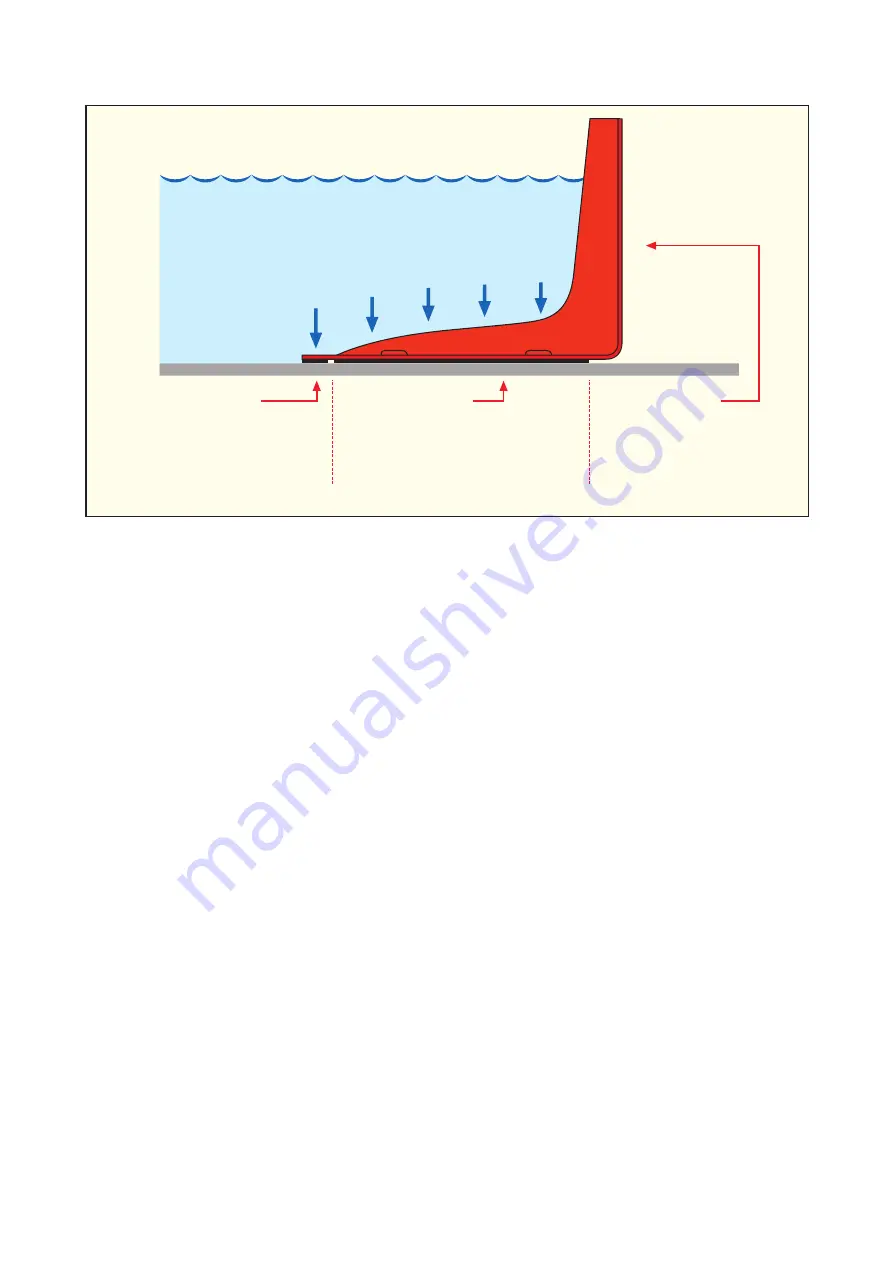
NOAQ BW102 1.0 201201
2 (8)
Each box consists of a damming part (the rear wall), an anchoring part (the horizontal section
that rests on the ground) and a sealing part (the front edge of the horizontal section). Sealing
strips of cellular plastic are fitted under the front and side edges. Each box is also fitted with
three cellular rubber soles to create a good grip on the road.
A boxwall is built up by snapping boxes one at a time onto the previous one. The easiest
way is to work from left to right (viewed from the dry side). You should avoid working from
two directions, as it is difficult to make the two wall sections meet at exactly the same point.
As with all mobile flood barriers you need to count on a certain leakage. This can be minimized
by covering the barrier with a plastic liner. But water is also leaking through the ground under
the barrier. Water may also come to the protected area as rain and through brooks which have
been cut off by the barrier itself.
Therefore one or more pumps must always be put on the
intended dry side of the barrier.
Sealing part
Beneath the front edge of
the boxwall is a sealing strip
made of cellular rubber. This
keeps the leakage of water
at the bottom to a minimum.
Anchoring part
The anchoring force is proportional to
the difference in water pressure between
the upper and lower side of the boxwall.
A system of drainage channels on the
lower side diverts the leaking water, so
that no counter pressure arises
Damming part
The rear wall dams the flood
water. The water’s pressure
is absorbed by a three large
bulges, which also act as
drainage channels.
This is how a NOAQ Boxwall works
The base section of the boxwall is pressed firmly against
the ground by the weight of the flood water. There are
three cellular rubber soles on the underside to provide
a reliable grip on the road.


























